At the grevillea survey, along Gum Flats Road in November, I was really excited to see many small specimens of Grevillea infecunda Anglesea Grevillea, our only representative of the genus; one large plant was in flower – what a delight.

Anglesea Grevillea
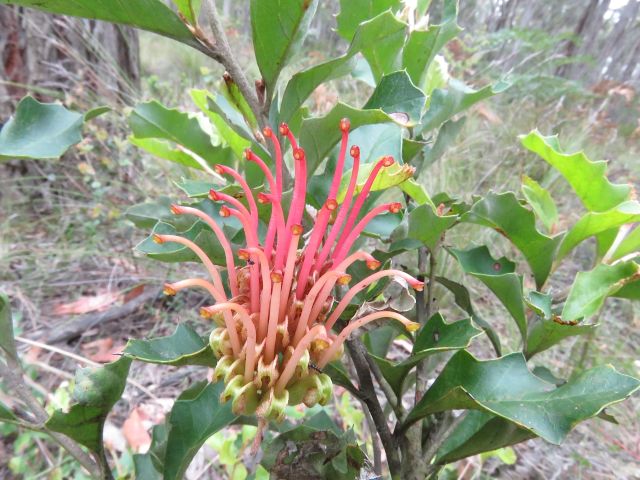
Anglesea Grevillea flower
We also saw carpets of the delightful Boronia nana var. hyssopifolia Dwarf Boronia. The tiny, white and pink, four-petalled flowers shone like tiny stars around our feet.

I have also been intrigued by the female flowers of Clematis microphylla Small leaved Clematis, as they prepared to spread their seeds to the winds. The numerous, shiny, silky, feathery tails, with small brown seeds attached, glimmer in the sun.

Small-leaved Clematis
From a distance the masses of flowers appear like smoky clouds overtaking the bushes in which they are entwined.
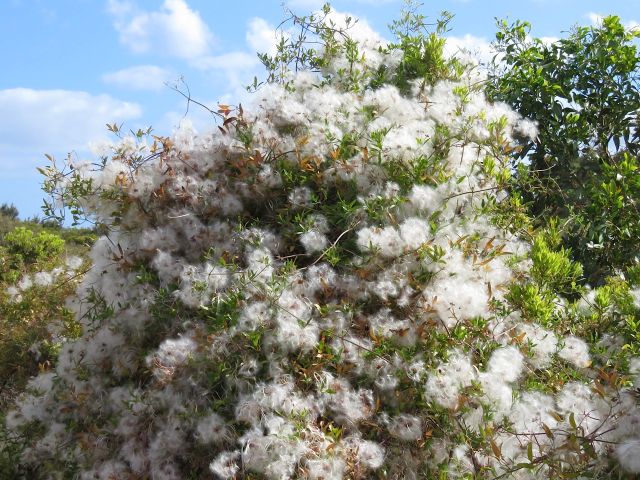
In the wetter forests, I discovered that Clematis aristata Mountain Clematis is only starting to flower, and is harder to see, as it is mostly high in the tree canopies. The early, prolonged dryness has already dried out many of the flowers. It will be interesting to see how all our plants cope with the extra-long summer aridity.
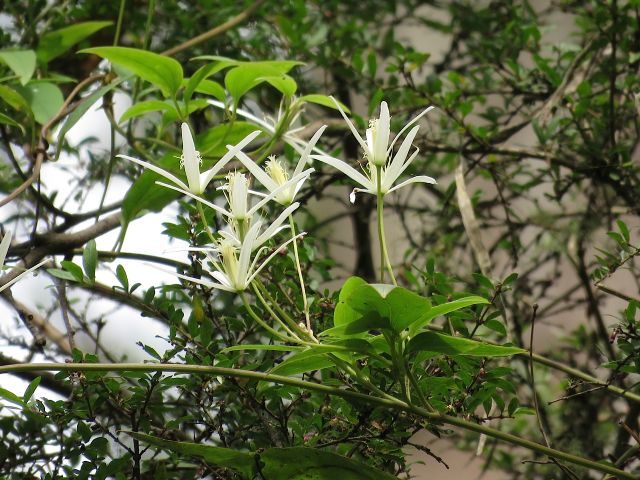
Mountain Clematis
In the waterways you may see the showy, yellow flowers of the aquatic Running Marsh-flower, which has the new botannical name of Ornduffia reniformis.
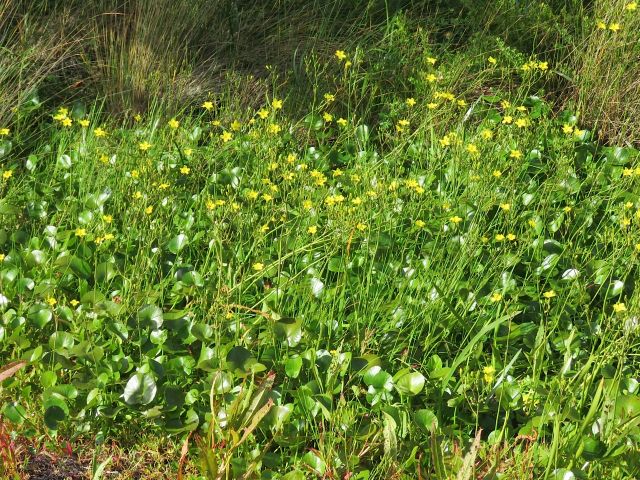
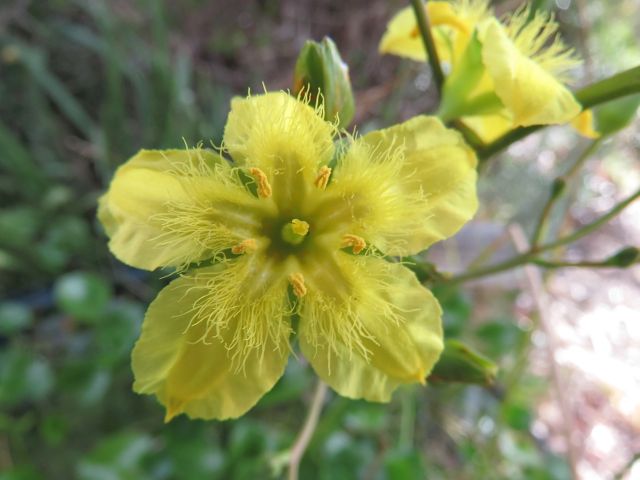
Running Marsh Flower
Its glossy green, almost circular leaves float on the surface. The tall flower stalks have racemes of flowers with five frilled petals.
A range of Olearias, Daisy-bushes, with similar-looking flowers, but of varying heights, may be seen. I particularly like Olearia argophylla Musk Daisy Bush, with its large pom pom-like clusters of small white daisies, and silky, white underside to the large leaves. This can be found in wetter gullies.

Musk Daisy Bush
Also to be found in moist forest, is our own seasonal tree, the Prostanthera lasianthos var. lasianthos Victorian Christmas Bush with its distinctive white flowers, and fragrant leaves.
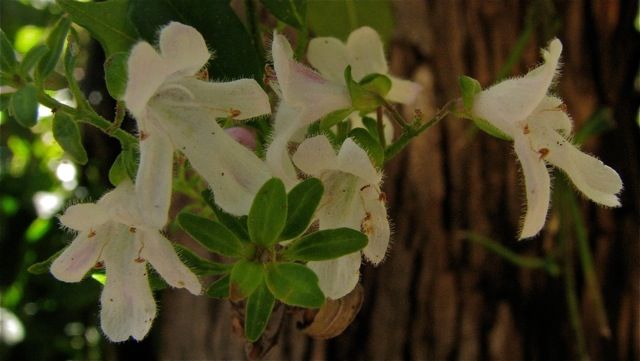
Victorian Christmas Bush
In the heathlands, you may see the last of our Fringe Lilies to flower, Thysanotus juncifolius Branching Fringe Lily, a truly wonderful sight.
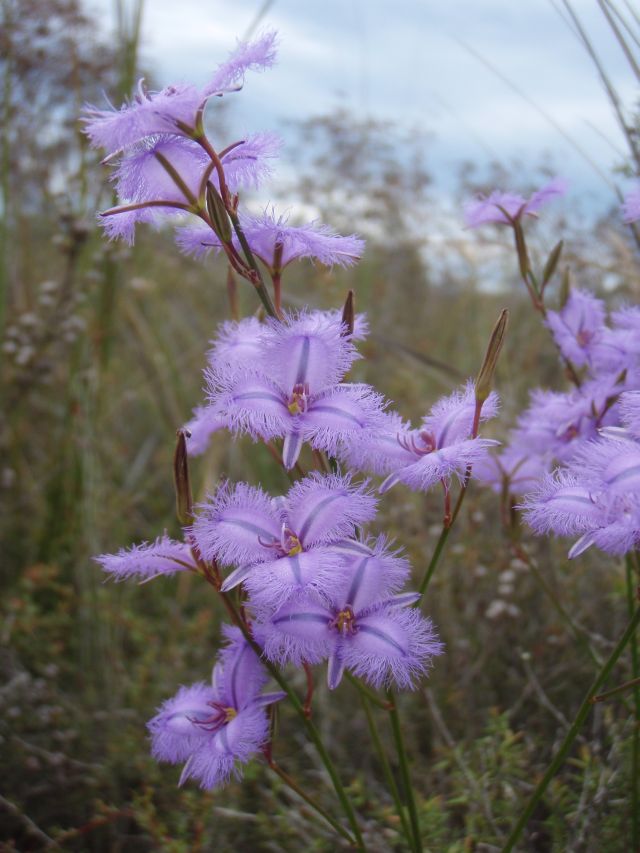
Fringe Lily
If you look closely at one of our most uninviting shrubs, Persoonia juniperina Prickly Geebung, you may see the needle-like leaves sheltering singular, tubular, yellow flowers.
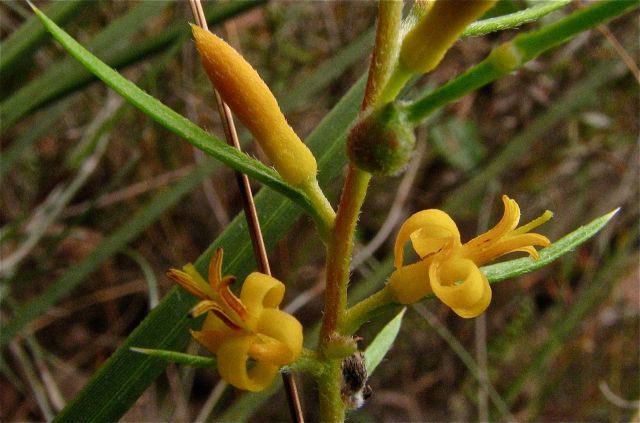
Prickly Geebung
It is worth a closer, ‘careful’ look, at the attractively turned-out petals.
Also in some areas, Conospermum mitchellii Victorian Smoke-bush is putting on a spectacular display with its sprays of tiny, greyish-white flowers. I love looking closely at the irregular flowers with one upper lip, and three-lobed, lower lip.

Victorian Smoke-bush
If you are lucky you may see the brilliant bluish-purple flowers of Lobelia gibbosa Tall Lobelia.

Tall Lobelia
These solitary, intensely coloured flowers, with white throats, have the characteristic appearance of two upper, curved back petals, and three, lower spreading petals.
Be sure to take your Flowers of Anglesea and Aireys Inlet on your walks, as there may be unexpected flowers to find, even in the summer heat.
Ellinor Campbell